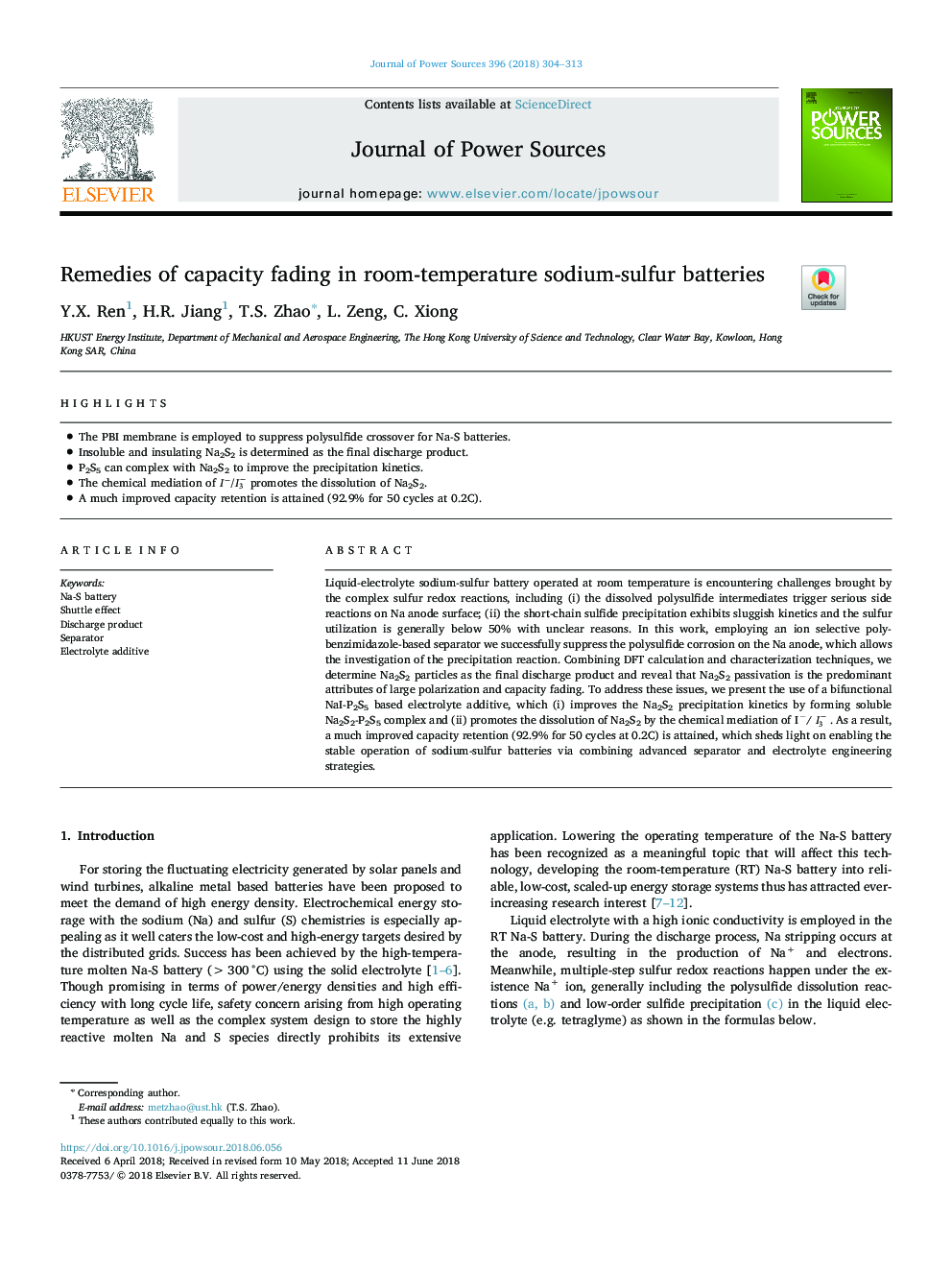| Article ID | Journal | Published Year | Pages | File Type |
|---|---|---|---|---|
| 7724823 | Journal of Power Sources | 2018 | 10 Pages |
Abstract
Liquid-electrolyte sodium-sulfur battery operated at room temperature is encountering challenges brought by the complex sulfur redox reactions, including (i) the dissolved polysulfide intermediates trigger serious side reactions on Na anode surface; (ii) the short-chain sulfide precipitation exhibits sluggish kinetics and the sulfur utilization is generally below 50% with unclear reasons. In this work, employing an ion selective polybenzimidazole-based separator we successfully suppress the polysulfide corrosion on the Na anode, which allows the investigation of the precipitation reaction. Combining DFT calculation and characterization techniques, we determine Na2S2 particles as the final discharge product and reveal that Na2S2 passivation is the predominant attributes of large polarization and capacity fading. To address these issues, we present the use of a bifunctional NaI-P2S5 based electrolyte additive, which (i) improves the Na2S2 precipitation kinetics by forming soluble Na2S2-P2S5 complex and (ii) promotes the dissolution of Na2S2 by the chemical mediation of Iâ/ I3â . As a result, a much improved capacity retention (92.9% for 50 cycles at 0.2C) is attained, which sheds light on enabling the stable operation of sodium-sulfur batteries via combining advanced separator and electrolyte engineering strategies.
Related Topics
Physical Sciences and Engineering
Chemistry
Electrochemistry
Authors
Y.X. Ren, H.R. Jiang, T.S. Zhao, L. Zeng, C. Xiong,
